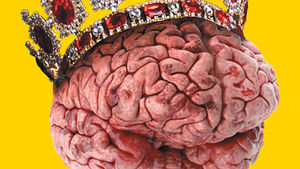
Faith Amidst Trials
Many Targeted Individuals report that the harms they endure are carried out remotely—what survivors often call “remote torture” or “remote brain-hacking.” They describe sustained, invasive interference that can alter perception, mood, sleep, cognition, and physical sensation. In survivor testimony, these effects are experienced as real injuries to the brain and nervous system, producing symptoms such as cognitive and speech difficulties, memory loss, balance and vestibular problems, tinnitus and other hearing injuries, localized pain, and chronic fatigue.
Those who speak about these harms commonly describe the technologies involved as electronic, psychotronic, and as a form of neuroweapons, often deployed as directed-energy weapons and increasingly driven by artificial intelligence. In many accounts, these tools are said to be developed, tested, and refined by military and intelligence organizations—and by their defense contractors—as part of an arms-race dynamic. Testimony and reporting sometimes name major intelligence alliances (for example, the Five Eyes) as part of a context in which non-kinetic weapons are researched, trained with, and, according to victims, sometimes used or perfected on unwitting civilians as well as on diplomats and intelligence assets.
It is important to explain what people mean by “psychotronic”: in TI accounts this term refers to systems or techniques that use directed electronic or electromagnetic interactions (often described alongside AI systems), neuroweapon effects, or other non-kinetic methods to influence or disrupt the nervous system, cognition, or sensory experience from a distance. Because these reports are often paired with accounts of local harassment, many targets say that neighbors, co-workers, or community members appear to be “perps” (short for perpetrators). A common observation is that some of those neighbors may themselves be remotely influenced or manipulated in their own minds—so that the target perceives coordinated local harassment even when outside technological systems may be at work. Understanding this possibility can help targets avoid escalating conflicts and instead focus on safe documentation.
These experiences are frequently misunderstood and misdiagnosed by the medical community—commonly mistaken for schizophrenia or other mental-health disorders—and are often dismissed by the public. Yet the symptoms many TIs report are consistent with what the media has called “Havana Syndrome”, what the intelligence community refers to as Anomalous Health Incidents (AHIs), and what some clinicians and advocates describe as Non-Kinetic Brain Injury (NKBI). Whatever the label is, these are real, serious harms that deserve careful documentation, medical evaluation, and a coordinated response.
Because the allegation involves powerful institutions and complex technologies, it is especially important to document experiences thoroughly, seek multidisciplinary medical assessment, and pursue legal and advocacy channels where appropriate. Survivors are encouraged to keep detailed symptom diaries, obtain objective testing (vestibular, audiology, neuropsychological assessments, and imaging as recommended), gather witness statements when possible, and request written medical reports—records that are vital for medical care, workplace accommodations, disability claims, and any legal or advocacy actions. There is also a great need for awareness and research. Independent medical and scientific studies are vital to understanding NKBI, neuroweapons, and the impact of directed-energy technologies, while public acknowledgment and open dialogue can help reduce stigma.
Targeted Individuals deserve to be heard, validated, and treated with compassion, not dismissed or disbelieved. At the heart of this issue is a simple truth: they are people who have been harmed, and they deserve care, justice, and hope. By listening with empathy, documenting experiences carefully, and offering practical support, we can begin to restore safety and dignity to their lives.
“Fingerprinting Auroras” exists as a testimony of how God help TIs endure and overcome these trials, and as an invitation for others to find strength in Christ, our only Savior. It is also a space where survivors can share their own victories in Him, encourage one another to endure, and together call for accountability, care, and rigorous investigation—until the day He comes again or calls us home.
Latest Posts
Share Your Story
Your testimony of faith and resilience can encourage others who are walking a similar path. Share suggestions, ideas, or words of encouragement to help us grow this space into a refuge of support and healing. Have insights, resources, or reflections to share? Send them in and help us make this site a living well of hope and truth.







